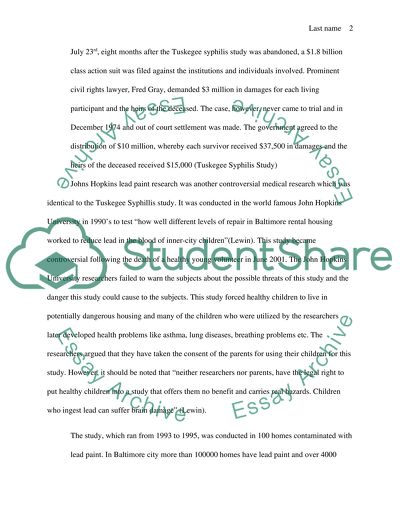Cite this document
(“Tuskegee Syphillis Study and Johns Hopkins Lead Paint Research Essay”, n.d.)
Retrieved from https://studentshare.org/health-sciences-medicine/1428216-critical-analysis-of-tuskegee-syphillis-stydy-and
Retrieved from https://studentshare.org/health-sciences-medicine/1428216-critical-analysis-of-tuskegee-syphillis-stydy-and
(Tuskegee Syphillis Study and Johns Hopkins Lead Paint Research Essay)
https://studentshare.org/health-sciences-medicine/1428216-critical-analysis-of-tuskegee-syphillis-stydy-and.
https://studentshare.org/health-sciences-medicine/1428216-critical-analysis-of-tuskegee-syphillis-stydy-and.
“Tuskegee Syphillis Study and Johns Hopkins Lead Paint Research Essay”, n.d. https://studentshare.org/health-sciences-medicine/1428216-critical-analysis-of-tuskegee-syphillis-stydy-and.


